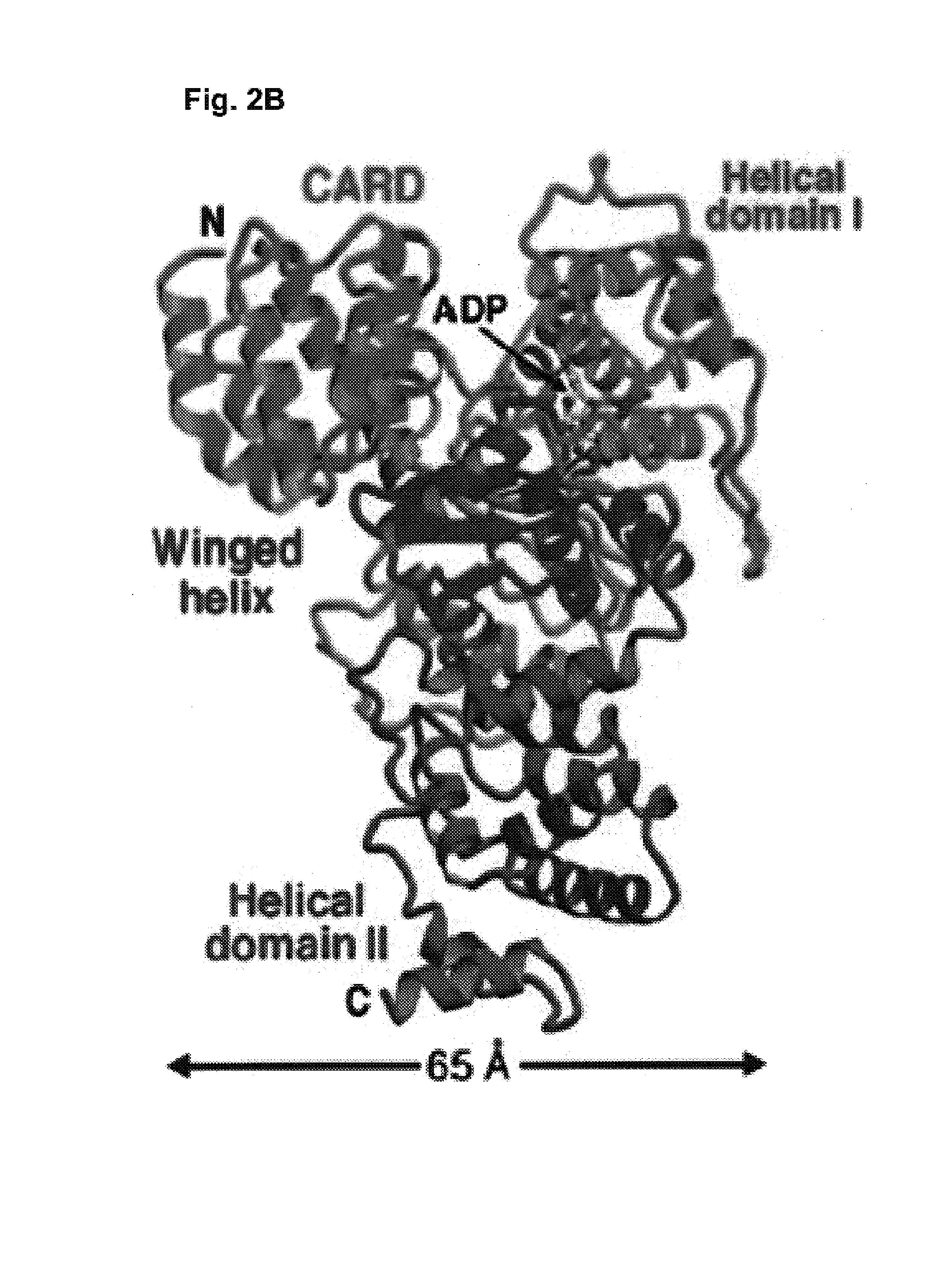Soluble, functional apoptotic protease-activating factor 1 fragments
a protease activating factor and apoptotic technology, applied in the field of modulating the activity of the apoptotic protease activating factor 1, can solve the problems of limiting our understanding of the mechanism of the nod family of proteins, underlying molecular mechanisms of how, and activation of caspase-9 that were not previously understood
- Summary
- Abstract
- Description
- Claims
- Application Information
AI Technical Summary
Benefits of technology
Problems solved by technology
Method used
Image
Examples
example 1
[0064]Preparation of Soluble Recombinant Apaf-1 Protein
[0065]Prior to the experiments described herein, there was no published protocol that allows bacterial expression and purification of a soluble recombinant Apaf-1 fragment longer than 200 amino acids. There was also no published protocol that allows the preparation of any soluble, stable, recombinant Apaf-1 fragment longer than 200 amino acids except that for the full-length Apaf-1 protein produced in baculovirus-infected insect cells. The full-length protein produced in baculovirus exhibited low yield and significant conformational heterogeneity, and its usefulness for many purposes is limited.
[0066]In the experiments described herein, several factors were discovered that enhance the expression of soluble Apaf-1 protein fragments in bacteria.
[0067]Length of Apaf-1 Protein Fragment
[0068]It was discovered that an Apaf-1 fragment having its carboxyl-terminal boundary between amino acids 550 and 650 of the native protein exhibits b...
example 2
[0075]Three-Dimensional Structure and Mechanism of Apaf-1
[0076]In this example, the 2.2-Angstrom three-dimensional structure of a functional fragment of Apaf-1 (residues 1-591) bound to adenosine diphosphate (ADP) is reported. This structure reveals, surprisingly, a closed conformation of Apaf-1. This structure provides a framework for understanding Apaf-1 function, apoptosome assembly, and caspase-9 activation. The information can also be used to decipher the general mechanisms of the NOD family of proteins.
[0077]The materials and methods used in this example are now described.
[0078]Protein Preparation
[0079]All constructs for protein expression were generated using a standard PCR-based cloning strategy, and the identity of individual clones was verified by double-stranded plasmid sequencing. A soluble Apaf-1 fragment (residues 1-591, sequence (SEQ ID NO: 1) shown in FIG. 1) was over-expressed in Escherichia coli strain BL21(DE3) using plasmid vector pET29 having the nucleotide sequ...
PUM
| Property | Measurement | Unit |
|---|---|---|
| temperature | aaaaa | aaaaa |
| width | aaaaa | aaaaa |
| length | aaaaa | aaaaa |
Abstract
Description
Claims
Application Information
 Login to View More
Login to View More - R&D
- Intellectual Property
- Life Sciences
- Materials
- Tech Scout
- Unparalleled Data Quality
- Higher Quality Content
- 60% Fewer Hallucinations
Browse by: Latest US Patents, China's latest patents, Technical Efficacy Thesaurus, Application Domain, Technology Topic, Popular Technical Reports.
© 2025 PatSnap. All rights reserved.Legal|Privacy policy|Modern Slavery Act Transparency Statement|Sitemap|About US| Contact US: help@patsnap.com



